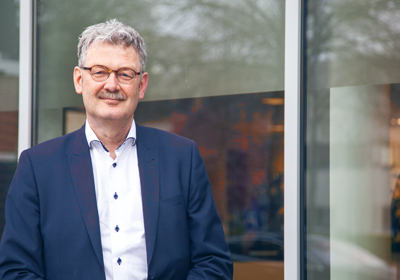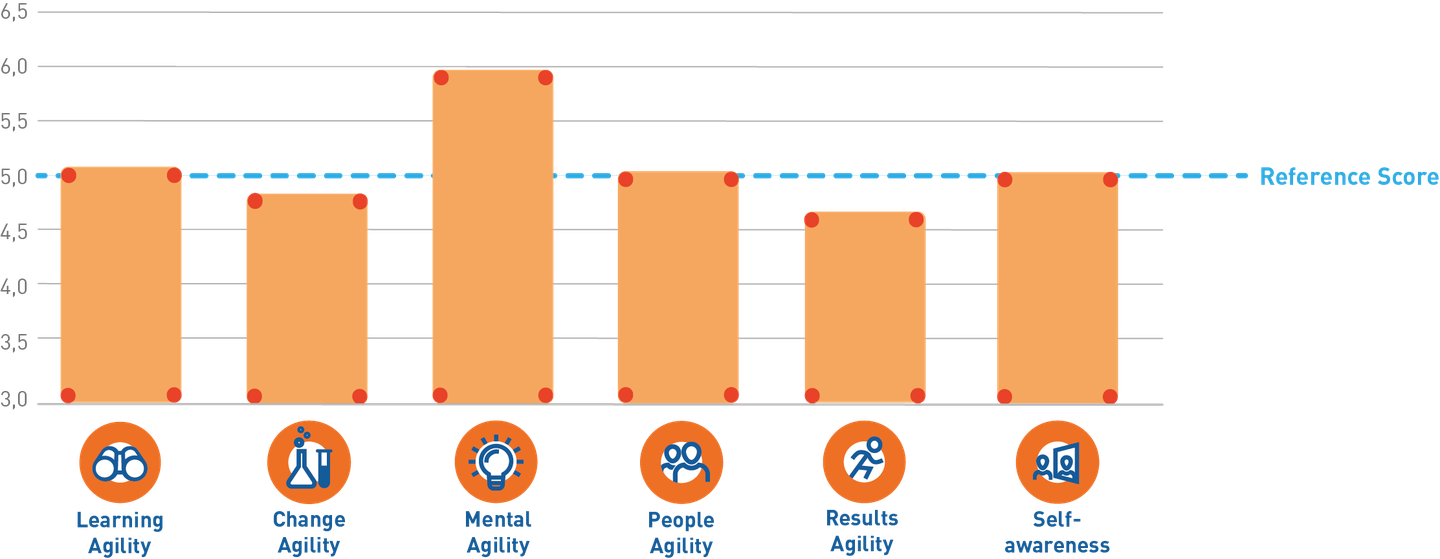
Learning Agility and changes in the construction sector
Learning Agility and changes in the construction sector
Two years ago, HFMtalentindex joined forces with the Royal Netherlands Society of Engineers (KIVI) to conduct a Learning Agility survey among engineers. Construction company Royal BAM Group employs lots of engineers. What's the situation with respect to Learning Agility there? How learning agile and innovative is the construction world?
Royal BAM Group’s activities include being part of a Construction consortium for a project that will protect us from super storms: reinforcing the Afsluitdijk. Water levels are rising, and extreme weather is likely to occur more frequently in the future.
Hans Ramler, Global Design Manager at BAM Group, is responsible for the total design for this project. He advises and ensures that the available knowledge and skills are used correctly. Previously he was involved in the development of people and their careers. He set up BAM Infraconsult, the engineering consultancy of BAM Infra Nederland, where around 500 people now work. Jan Meijning, organisational psychologist at HFMtalentindex, talks to him about the Learning Agility of engineers, innovation within the construction world and the role of HR.

High Mental Agility, Results Agility lags behind
One of the results of the survey was that engineers score above average on Mental Agility. People who achieve a high score for Mental Agility are receptive to different perspectives, like facing issues that are complex and enjoy analysing things. New ideas provide them with a challenge. Hans definitely recognises this. He sees that tasks are sometimes performed differently than agreed and that engineers are keen to explore and find alternatives. He now knows that it's better if he addresses employees about their skills and challenges rather than ask them why they didn't do what was planned.
Another result of the survey is very familiar to Hans too. Engineers like to be creative when solving problems but are less interested in finding the shortest route to the final result. They score below average on Results Agility.
Hans explains: ‘If a clear path is set out, they first check what they can find in the rooms lining that path. They can't resist those doors; it's almost impossible for them not to open them.’
He also sees that engineers are often constantly putting out fires. So short cyclical work, in which they lack a total view of the project.
Diversity among engineers - the men vs the women
In practice, does Hans find that women engineers are more learning agile than their male colleagues, as the survey reveals?
There are considerably more women working in the organisation than in the past. The HR department's policy aimed at creating more diversity on the work floor has borne fruit. Women often work in tender strategy, environment management and risk management, less often in hardcore engineering. That's not because they can't do the job. In practice, women prefer to work at substantive level in an engineering consultancy. Here they are often better able to develop in their specialist area than in a construction company. Women engineers generally tend to be more empathetic than the men. As such they not only perform well technically, they are often much better in communication.
To put it bluntly, you could say that’s why women from a design department in a construction company often end up on the international side, working on international projects. There they are listened to and have fewer problems with the 'male culture’, which is a dominant feature in Dutch construction. In practice, they feel more at home in a mixed environment. That reality is difficult to change, and such changes take a long time. Hans sees a role for HR here.
Innovations in the construction world
The HR department must work to achieve a culture change within the organisation. You could claim that supervisor positions in the construction industry were traditionally filled by graduates from Higher Technical Schools. University graduates went to engineering consultancies, the design side. The engineering consultancies designed, the builders built and were inspected by the consultancies. After that, construction, design and inspection became the responsibility of the builders, and the engineering consultancies worked under the builders. As a result, the relationships totally changed. A male culture developed among the builders, with a lack of understanding about anything related to design. On the other side are the engineers. They can sometimes be rather docile and as a result, they tend to let themselves be overruled.
In construction projects, the client prefers to work with proven techniques. These are easier and cheaper to apply than innovative techniques. Innovation of construction projects sometimes gets relegated to the background. Fortunately, there are exceptions. For the Noordelijke Randweg Gemert (Northern Ring Road Gemert) in North Brabant, for example, there was plenty of scope for sustainable innovation. With the Province as client, in this construction project an entire bridge was produced by a 3D printer. However, such a bridge is currently still more expensive to make than a traditional bridge. A long-term vision is required to show that this innovation has a real future, with lots of advantages and new opportunities.
Work-life balance more important
In terms of recruitment marketing, labour market communication, the HR department has achieved a great deal. The good stories attract new employees, but these employees sometimes find themselves in a situation that does not totally reflect what they heard. HR needs to take a critical look at the dominant culture in the organisation and start breaking through the patterns.
In an ideal situation, execution and design should be equivalent to each other in the organisation. As a process facilitator, HR must make this shift a priority. That's quite a challenge, particularly with a work force in the organisation that is not very change agile. Fortunately, Hans sees a very different attitude among the organisation’s younger employees.
The younger generation in construction tend to work together with each other much more and have a different work-life balance too: they more often work part time, have parent days and go home on time. They have a very different division of labour at home than the traditional division that he used to know. Sometimes he notices a sense of powerlessness in himself and his peers about that relativational attitude and work-life balance of younger colleagues. At the same time, he does see flexibility when he calls on that younger generation.
That new attitude of the younger generation obviously also involves a different way of relating to each other. When someone has a different division of labour at home, they automatically translate that to their working environment. Not only in the traditional man-woman relationship, but also in the relationship towards different professions. The culture in the construction world is thus really changing, and that change will come from the younger generation.